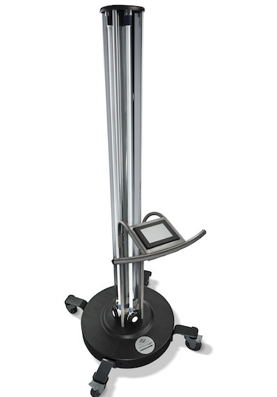 Cleanzine: your weekly cleaning and hygiene industry newsletter 10th July 2025 Issue no. 1170
Cleanzine: your weekly cleaning and hygiene industry newsletter 10th July 2025 Issue no. 1170
Your industry news - first
The original and best - for over 20 years!
We strongly recommend viewing Cleanzine full size in your web browser. Click our masthead above to visit our website version.
Burgess Health Center implements Clorox Healthcare UV technology to fight infection
 Multi-drug resistant organisms that can cause healthcare-associated infections such as CRE (carbapenem-resistant Enterobacteriaceae), MRSA (methicillin-resistant Staphylococcus aureus) and Clostridium difficile (C. difficile) continue to be a problem among healthcare facilities.
Multi-drug resistant organisms that can cause healthcare-associated infections such as CRE (carbapenem-resistant Enterobacteriaceae), MRSA (methicillin-resistant Staphylococcus aureus) and Clostridium difficile (C. difficile) continue to be a problem among healthcare facilities.
As these infections continue to threaten patient populations, Burgess Health Centre in Iowa, US is adding an extra innovative precaution to existing infection control protocols: the addition of ultraviolet (UV) technology to treat patient rooms and other key areas in the facility.
Thanks to generous donors at Poinsettia Ball and Holiday Brunch, (Ed: sponsorship... a great idea for the NHS?) Burgess Foundation purchased a Clorox Healthcare Optimum-UV System, which uses UV light to kill microorganisms by inactivating their DNA, rendering them harmless and unable to replicate.
The system was selected based on its ability to kill key organisms associated with increased hospital-acquired infections, its ease of use and its cost effectiveness. The device is effective against a range of dangerous pathogens, including MRSA and C. difficile spores, in just five minutes at a distance of eight feet.
"Patient safety is a top priority at Burgess Health Center," says Sharon Taylor, infection preventionist, at Burgess. "We chose to purchase a UV device as an added measure to help us prevent healthcare-associated infections and ensure the safest possible environment of care for our patients, staff, and visitors. The device can treat areas that are difficult to clean manually, so it helps ensure that we leave no crevice unturned."
Burgess uses the system to clean all patient and isolation rooms between patients, operating rooms daily, and emergency rooms are treated on a rotating basis. The device is run after the environmental services team thoroughly cleans and disinfects each room with a chemical surface disinfectant product, and the UV device is then used to supplement these efforts.
In a typical patient room, the device is placed on both sides of the patient bed and turned on for five minutes in each position. It's also placed in the patient bathroom for another five-minute cycle. A similar process is followed for the ICU.
"Cleaning and disinfection plays a crucial role in infection prevention and with pathogens such as C. difficile spores, able to survive on surfaces for months at a time, we felt it was important to implement even more comprehensive cleaning procedures as part of our daily and discharge cleaning practices," continues Sharon. "We've found that the Clorox Healthcare Optimum-UV System provides an effective, high-quality and easy to use solution that has helped achieve reductions to our already low infection rates."
15th June 2017







